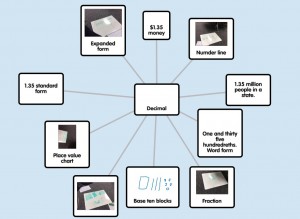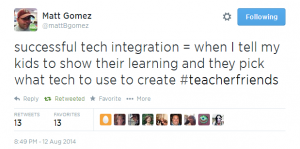There is clearly not enough time in the day. I have a never ending to do list that seems to grow more than it shrinks. Recognizing that I don’t have enough time to do all the things that I have to do, much less what I want to do, I still feel like this post needed to shared.
Collaboration isn’t an option, it is now a necessity.
Knowing that we can get bogged down in our buildings, or in our classrooms, can make us feel like taking an extra step to communicate and collaborate with other teachers may push us over the edge. But sometimes? It can lead to the most organic of discoveries!
Last week, I was scrolling through Instagram, I came across a post from another educator friend talking about the website Popplet. Popplet is a visual mind mapping tool that students can use to organize facts and thoughts and learn to create relationships between them. I took a screenshot and sent it to two of my teachers whom I thought would enjoy teaching with it.
The next week, one of them, a second grade teacher, had her students use popplet to write word problems. They had to roll a dice and get three numbers. They then used those three numbers to create a math word problem and had to show different ways to solve it on a popplet.


The other, a fourth grade teacher, used it to illustrate all the different forms of numbers they had been studying. The students wrote one form of the number in the middle and then connected all of the different ways it could be written around it.
His comment? “You never know what a students doesn’t know until you ask them to create something.” It began very clear, and very easy, to see which students were struggling.
I couldn’t have required such an epiphany!!
The point here is that I didn’t pay to go to a conference. I didn’t sit through a webinar. I didn’t read a book. I simply saw a picture on a form of social media and shared it. Something that quick and easy allowed these teachers to add another tool in their toolbox to gather formative assessment data from their students. Sharing doesn’t require a tremendous amount of effort, you just have to do it!

 It’s time to get blogging! We’ve talked about the different do’s and don’ts for blogging…but I wanted to add a couple more here. Read through these and post a comment about the rule you think is MOST important and why.
It’s time to get blogging! We’ve talked about the different do’s and don’ts for blogging…but I wanted to add a couple more here. Read through these and post a comment about the rule you think is MOST important and why. In a book that promises to lay out a plan that helps teachers close gaps in small group instruction, I found myself hoping that Ms, Rollins could do just that, knowing that my focus this school year would be p instructional strategies that truly makes a difference.
In a book that promises to lay out a plan that helps teachers close gaps in small group instruction, I found myself hoping that Ms, Rollins could do just that, knowing that my focus this school year would be p instructional strategies that truly makes a difference. 